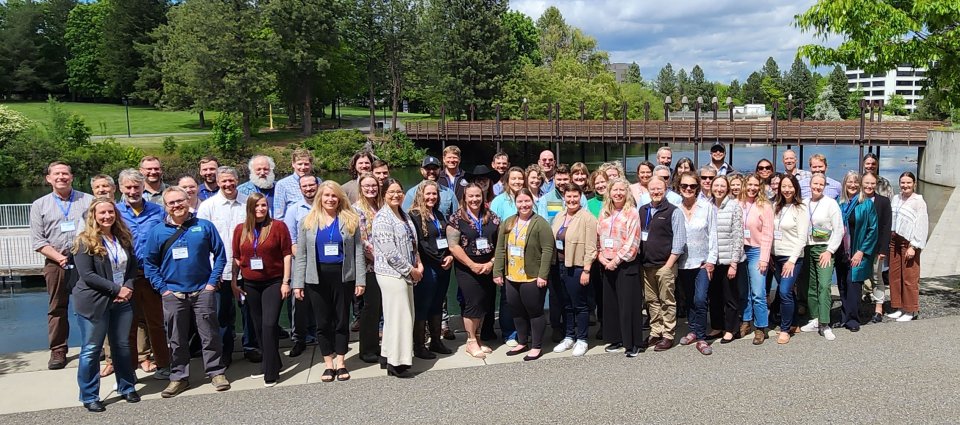Columbia River Basin Restoration Working Group
About the working group
In October 2020, EPA transitioned the existing Columbia River Toxics Reduction Working Group into the Columbia River Basin Restoration Working Group to align with the 2016 amendment to the Clean Water Act, Section 123, which created the Columbia River Basin Restoration Program.
The goal of the working group is to understand and reduce toxics across the basin. It reflects the governmental, geographic, cultural, and economic diversity of the basin and includes representatives from tribal governments, states, industry, utilities, non-governmental organizations, and others.
More information about the Working Group:
Fact Sheet: Columbia River Basin Restoration Program Working Group (pdf)
Working Group Meetings

The working group meets two times each year, led and coordinated by EPA. Meetings are open to the public and anyone may participate.
Next meeting
May 2025. The next meeting date and location to be announced.
Past meetings
- Working Group Meeting Summary: October 31, 2024 (Virtual) (pdf)
- Working Group Meeting Summary: May 22-23, 2024 (Spokane) (pdf)
Additional materials from past meetings are available on EPA's file sharing site: Meeting Summaries and Presentations.
Toxics Monitoring Subgroup
The ad hoc Toxics Monitoring Subgroup grew out of a request for more focused discussion at the October 2020 Columbia River Basin Restoration Program Working Group meeting. Following that meeting, EPA hosted two webinars (in February and June of 2021). The goal of these collaborative meetings was to provide a flexible forum for grantees to share monitoring activities, discuss analytical methods, ask questions of EPA and other grantees, and share information and best practices. The group builds on these past meetings and establishes an ongoing conversation about monitoring in the Basin.
Toxics monitoring dashboard
The Columbia River Basin Toxics Monitoring Dashboard visualizes the data collected in the Toxics Monitoring Project Tracking Matrix. Together they are intended to advance the broad understanding of toxics monitoring efforts in the Basin (who’s doing what, where, when, and how), help facilitate coordination and collaboration among toxics monitoring projects, and assist with identifying information gaps.
For more information, contact [email protected].
Next subgroup meeting
Please visit the Pacific Northwest Aquatic Monitoring Partnership's website for meeting dates and contact information.
Past subgroup meetings
Projects and Highlights
The working group has developed a number of technical and informational products, including:
- Columbia River Basin Contaminants of Concern Framework
- Toxic-Impaired Waterbodies on 303d Lists in the Columbia River Basin
- Columbia River Basin Toxic Contaminants Reference List
- 2019 Columbia River Basin Toxics Reduction Status Update
- Story Map: Willamette River Toxics Reduction Partnership
- Story Map: Polycyclic Aromatic Hydrocarbons - Locations in the Columbia River Basin Where the Toxics Could Be Affecting Fish and Wildlife
- Chemicals of Emerging Concern in the Columbia River
- Columbia River Toxics Reduction Action Plan
- State of the River Report for Toxics
- Prioritization of Toxics in the Columbia River
Contacts
- Robin Parker ([email protected]), 208-378-5761, EPA Region 10
- Peter Brumm ([email protected]), 406-457-5029, EPA Region 8
